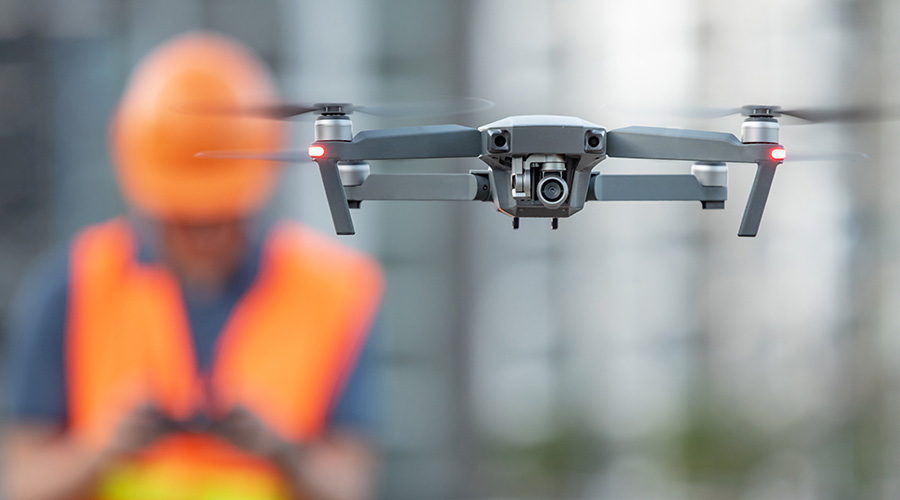How to Prevent Damages Caused by Pests
Pests are bad enough, but the damage they create is another nightmare altogether.
By Jeff Wardon, Jr., Assistant Editor
OTHER PARTS OF THIS ARTICLEPt. 1: This Page
Pests are capable of wreaking havoc on both institutional facilities and commercial facilities. They can cause damage to facilities inside and out, for example, chewing through electrical wiring and vehicle engines or leaving behind odorous and hazardous urine and droppings. On top of that, pests can also spread disease to building occupants.
In this manufacturer roundtable, Facilities Maintenance Decisions spoke to pest control manufacturers about what damage pests can inflict and when to use in-house versus outsourced pest control.
Facilities Maintenance Decisions: What kinds of damage can pests cause to facilities?
“The damage pests can inflict on facilities is extensive, ranging from harm to irrigation systems and crops to significant structural and electrical damage. Rodents, in particular, can cause unthinkable and catastrophic harm if left unchecked, impacting everything from car engines and production equipment to critical infrastructure. The shift towards innovative pest control methods not only mitigates these risks but also promotes a more humane and environmentally responsible approach.”
— Courtney Ray, technical product director, SenesTech
“Many pests — from rodents to cockroaches and flies to birds — can be a serious issue in warehousing and manufacturing facilities as they can damage product and spread pathogens. Stored product pests are particularly challenging as they can damage, contaminate and destroy large quantities of stored goods. This contamination renders products unfit for distribution, resulting in product loss and profit reduction. These and other pests can infiltrate various points in the supply chain, requiring constant vigilance to prevent further spread.”
— Ian Williams, technical services manager, Rollins, Inc.
“Rodents make a mess wherever they go. They are not latrine animals; they basically defecate everywhere. Rats tend to cluster it a little bit, whereas mice leave droppings in all places they visit. Rat and Mouse droppings are hazardous: hantavirus, leptospirosis, lymphocytic choriomeningitis (LCMV), Tularemia and Salmonella are diseases that rats and mice can carry. Rodent urine is pungent, staining and riddled with biohazards.
However, the greatest property damage rodents cause is from gnawing or chewing. The name Rodent is derived from the Latin word rodere, or “to gnaw”. They gnaw on things because they have a pair of top incisors and a pair of bottom incisor teeth that never stop growing. Gnawing helps file the teeth down.
Rats and mice will chew on almost anything, and one item that is particularly sensitive to rodent's chewing is wiring. A lot of modern vehicle wiring uses vegetable-based plastics which make them more attractive to rats. A vehicle re-wire can cost thousands of dollars. In addition to vehicles, equipment and machinery, networking cables and low voltage wires are susceptible to rodent damage. The latter can also lead to structure fires. It has been estimated that rodents are responsible for 20 percent of fires with unknown causes.”
— Blair Calder, chief executive officer, Automatic Trap Company
FMD: Which pest control measures are maintenance managers capable of handling in-house? When should a maintenance manager consider hiring a third-party vendor for pest control services?
“With the right training and protocol, maintenance managers can help keep facilities clean and enlist the entire team to watch for pest pressures.
- Employee Training: Train all staff to recognize signs of pest activity and implement basic prevention measures. This includes educating them on identifying pest pressures and maintaining cleanliness standards.
- Sanitation and Inspection: Regularly clean facilities to reduce pest attractants and conduct thorough inspections for signs of pests like droppings or gnaw marks. This proactive approach helps identify and address pest issues early.
- Exclusion Tactics: Seal openings and cracks in walls, install door sweeps and ensure proper landscaping maintenance to minimize outdoor pest access.
- First-in-First-Out: Implement FIFO practices to ensure older products are used or disposed of first, reducing the risk of pests finding harborage in stored goods.
- Isolation of Infestations: Quickly isolate any products or areas where pest activity is detected to prevent further spread and minimize damage.
- Monitoring and Documentation: Maintain detailed records of pest activity and implement ongoing monitoring. This helps track effectiveness and supports adjustments in pest control strategies.
For complex pest issues or specific treatments, especially those across multiple sites or in large-scale facilities, a professional pest control provider with specialized knowledge and tools is necessary. They can also provide timely response to emergencies and ongoing support between scheduled maintenance.”
— Ian Williams, technical services manager, Rollins, Inc.
Jeff Wardon, Jr. is the assistant editor for the facilities market.
Related Topics:












